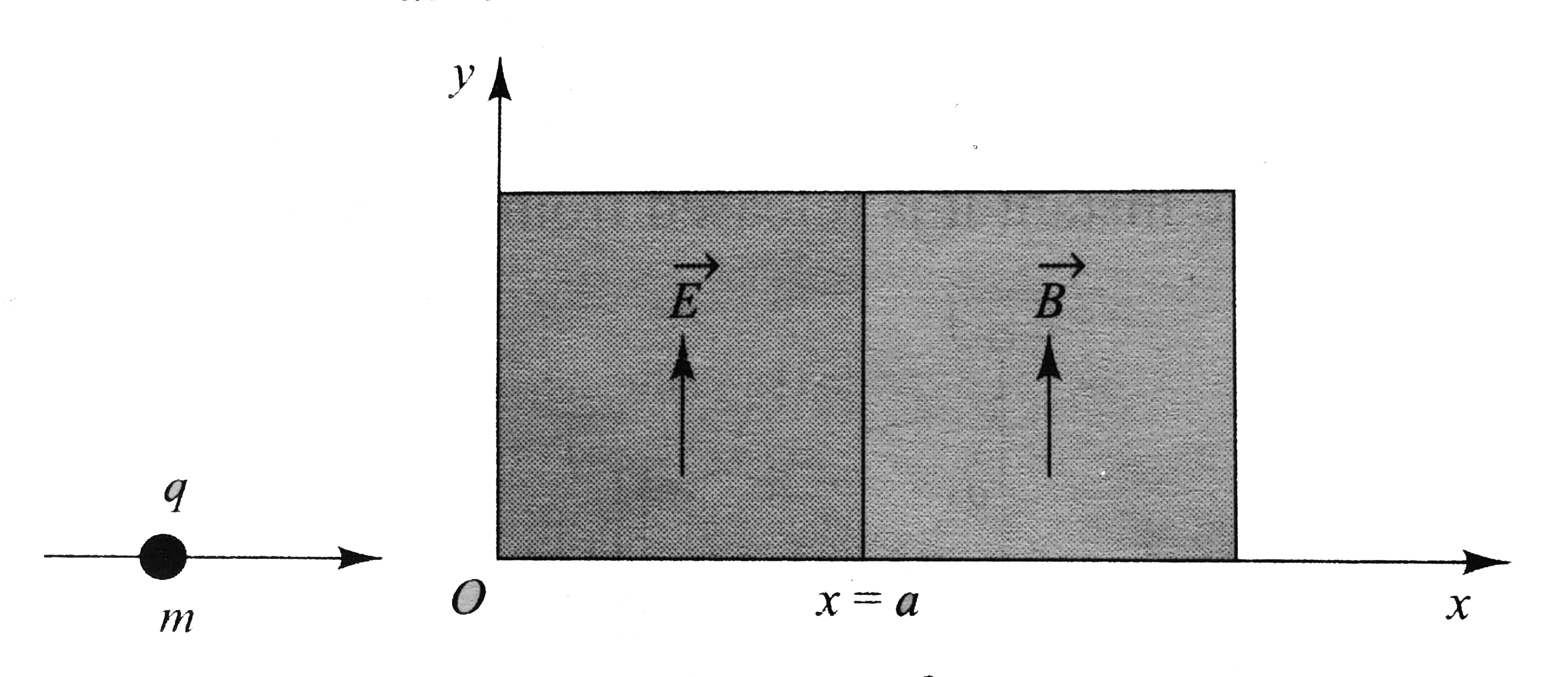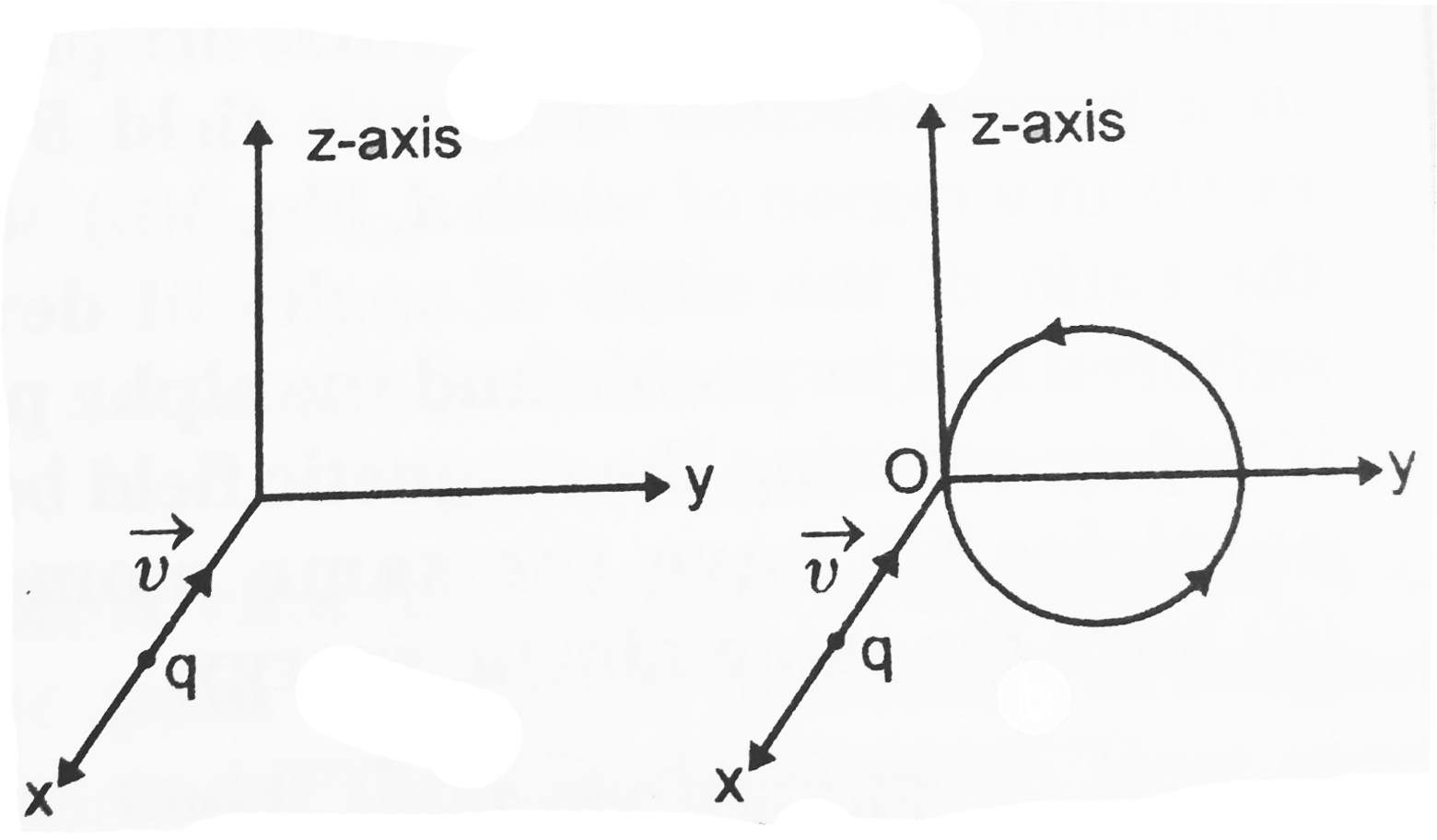A positively charge particle moving along x-axis with a certain velocity enters a uniform electric field directed along positively y-axis. Its
Vertical velocity changes but horizontal velocity remains constant
Horizontal velocity changes but vertical velocity remains constant
Both vertical and horizontal velocities change
Neither vertical nor horizontal velocity changes
The correct Answer is:A
Since ay=qEm
ax=0
vx = constant.

Topper's Solved these Questions
- BOOK - ERRORLESSCHAPTER - ELECTROSTATICSEXERCISE - NCERT BASED QUESTIONS (Electric Dipole)21videos
ELECTROSTATICS
- BOOK - ERRORLESSCHAPTER - ELECTROSTATICSEXERCISE - NCERT BASED QUESTIONS (Electric Flux and Gauss.s Law)27videos
ELECTROSTATICS
- BOOK - ERRORLESSCHAPTER - ELECTROSTATICSEXERCISE - ASSERTION & REASON25videos
ELECTROSTATICS
- BOOK - ERRORLESSCHAPTER - ELECTRONICSEXERCISE - Assertion & Reason26videos
ELECTRONICS
- BOOK - ERRORLESSCHAPTER - MAGNETIC EFFECTS OF CURRENT EXERCISE - ASSERTION & REASON18videos
MAGNETIC EFFECTS OF CURRENT
Similar Questions
A positively charged particle, having charge q, is accelerated by a potential difference V. This particle moving along the x-axis enters a region where an electric field E exists. The direction of the electric field is along positive y-axis. The electric field exists in the region bounded by the lines x=0andx=a. Beyond the line x=a (i.e., in the region x>a), there exists a magnetic field of strength B, directed along the positive y-axis. Find

a. at which point does the particle meet the line x=a.
b. the pitch of the helix formed after the particle enters the region x≥a. (Mass of the particle is m.)View SolutionA charge q moving along the X-axis with a velocity →v is subjected to a uniform magnetic field B acting along the Z-axis as it crosses the origin O. Figure.

(i) Trace its trajectory . (ii) Does the charge gain kinetic energy as it enters the magnetic field? Justify yous answer.View Solution
Knowledge Check
- Question 1 - Select One
A particle of mass m carrying a positive charge q moves simple harmonically along the x-axis under the action of a varying electric field E directed along the x-axis. The motion of the particle is confined between x=0 and x=2l. The angular frequency of the motion is ω. Then which of the following is correct ?
AqE=−mω2(x−1)BqE=mω2(x−1)CElectric field to the right of origin is directed along the positive x-axis for all balues of x.DElectric field to the right of origin is directed along the negative x-axis for all balues of x. - Question 2 - Select One
A positively charged particle moving due east enters a region of uniform magnetic field directed vertically upwards. The partical will be
Aconitinue to move due eastBmove in a circular orbit with its speed unchangedCmove in a circular orbit with its speed increasedDgets deflected vertically upwards - Question 3 - Select One
A charged particle moves along positive y-axis with constant velocity in uniform electric and magnetic fields. Ilf magnetic fiedl is actig along positive x-axis, then, electric field should act along positive z-axis.
Reason: To keep the charged particle undeviated the relation E=B×v must hold good.AIf both Assertion and Reason are true and the Reason is correct explanation of the Assertion.BIf both Assertion and Reason are true but Reason is not the correct explanation of AssertionCIf Assertion is true, but the Reason is false.DIf Assertion is false but the Reason is true.
A proton is placed in a uniform electric field directed along the positive x-axis . In which direction will it tend to move?
View SolutionA positively charged particle with specific charge σ leaves the origin with a velocity u directed along positive x direction. The entire space has a uniform electric field (E) and magnetic field (B) directed along the positive y direction. Find the angle that the velocity of the particle makes with y direction at the instant it crosses the y axis for nth time.
View SolutionA positively charged ion is released at the origin of a co-ordinate system. The entire space is filled with a uniform electric field directed along positive x axis and a uniform magnetic field directed along positive z direction.
(i) Which(x,yorz) co-ordinate of the particle will always remain zero during its course of motion?
(ii) Which (x,yorz) co-ordinate of the particle will always be negative?
(iii) It is true to say that radius of curvature of the path of the particle is decreasing while its x co-ordinate decreases?
(iv) If the ion is negatively charged will its y co-ordinate ever become negative?View SolutionEquipotential surfaces associated with a uniform electric field along positive x-axis are planes parallel to
View SolutionA charged particle can be deflected by electric and magnetic filed both The electric force →Fe=q→E and magnetic force −→Fm=→qv×→Bq = charge in coulomb, oversetrarrV is velocity in m/s →E is electric filed strengh in N/C and B is magnetic field strength in tesla (T) If a moving charged particle enters simultaneous electric and magnetic field, the net force on the charged particle is
→F=q(→E+→v×→B)
If →F=0 the charged particle will move undeflected in simultaneous fields
If a charged particle moving along x-axis enters the simultaneous electric and magnetic fields at right angles Electric field is along y-axis and magnetic field along z-axis and v>EB the particle will .View Solution

